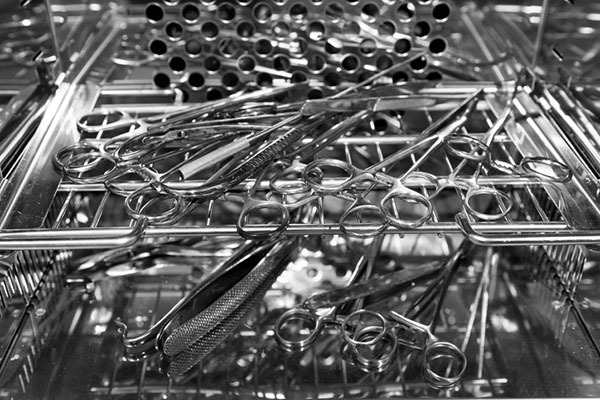
HICprevent
This award-winning blog supplements the articles in Hospital Infection Control & Prevention.
Sterilant Used on Majority of Surgical Instruments Is a Carcinogen
April 26th, 2023

By Gary Evans, Medical Writer
Proposed regulations by the Environmental Protection Agency (EPA) are designed to sharply reduce worker exposures to ethylene oxide (EtO) sterilant and prevent occupational cancer.
EtO is used on approximately 50% of all sterilized medical devices, annually, including an estimated 95% of all surgical kits. EtO can sterilize heat- or moisture-sensitive medical equipment without causing any damage.
“Presently, there are no viable alternatives to EtO for the sterilization of certain medical devices and equipment,” the EPA stated. "The absence of EtO for use on medical devices and equipment would cause widespread disruption to the availability of sterile medical devices.”
But something had to be done. In a process that has evolved over time, the simple fact is that much of the medical equipment used in the United States is being sterilized with an antimicrobial pesticide and a known carcinogen. Unless meticulously controlled and mitigated through various stages of use and exhaustion of the gas, EtO can pose a risk to hospital workers, as well as employees in large freestanding sterilization sites and even the neighborhoods near them.
Ethylene oxide is carcinogenic to humans by the inhalation route of exposure. The EPA said a review of reported incidents from 2008 to 2022 in the United States included a hospital employee who was diagnosed with leukemia after six years of employment.
“Although EtO is a known carcinogen, it is not possible to determine if the cancer in this incident was caused by EtO exposure and/or some other factor(s) based on the available information,” the EPA stated. “The Agency intends to monitor human incidents for EtO and will conduct additional analyses if necessary.”
The Centers for Disease Control and Prevention (CDC) is less equivocal about the dangers of EtO, saying the sterilant can be so easily absorbed by other materials, that if not properly aerated, it can cause damage due to chemical residue on an implant within the patient.
“Injuries (e.g., tissue burns) to patients have been associated with EtO residues in implants used in surgical procedures,” the CDC stated. “Occupational exposure in healthcare facilities has been linked to an increased risk of spontaneous abortions and various cancers.”
While aimed primarily at free-standing sterilization facilities — particularly after it was discovered that EtO could leak from these sites into surrounding communities — the EPA also seeks comment on several provisions designed to protect hospital workers.
Healthcare facilities use much smaller volumes of EtO than the freestanding sterilization facilities, but “given the low concentration at which EtO may present inhalation cancer risks of concern, EPA now believes additional risk mitigation measures are needed,” the EPA states.
As of 2010, ethylene oxide hospital sterilization is required to be performed in a so-called “all-in-one” chamber, where the various stages of EtO application are followed by aeration in the same unit to remove residue and absorption.
“Most modern ETO sterilizers combine sterilization and aeration in the same chamber as a continuous process” the EPA notes. “These facilities sterilize material in oven-sized chambers using 4.5 to 170 grams of EtO per load.”
The provisions for hospitals — which the EPA is requesting comment on —include the use of respirators not typically used in acute care facilities. The EPA wants to know the feasibility of using “supplied airline respirators or self-contained breathing apparatus (SCBA) respirators in healthcare facilities for employees who are unloading EtO sterilization equipment from the sterilization chamber.”
Although designs vary, the air supply model provides air from another source beyond the work area, and could be plugged into a wall via a breathing tube. The SCBA is a breathing system worn by the employee, with a positive pressure inhalation device on the face supplied by a tank of compressed air worn on the back.
EPA proposes that additional abatement devices be required to be used along with EtO sterilization devices in healthcare settings. Accessory abatement devices can reduce EtO emissions by more than 99%. After that the EtO gas would be vented through exterior ventilation stacks that serve the negative pressure sterilization room only. The use of these abatement devices and the other interventions should reduce the risk of exposure to EtO in areas around a hospital to close to zero.
“This would [also] ensure that there is minimal EtO exposure for workers and bystanders within healthcare facilities,” the EPA said. “The system should route the EtO directly to the outside of the building by maintaining a net suction on all of the exhaust ductwork.”
The EPA was conscious of the burden these requirements may put on hospitals, even conceding that the new masks and air hoses may be awkward to use at first. The Agency seeks public comment on the cost and time necessary for implementation of the proposed engineering controls.
EPA is proposing that these engineering controls be implemented within 2 years after the regulation is finalized.
Editor’s note: To submit a comment on the EPA action go to https://www.regulations.gov/ and enter Docket ID No. EPA–HQ–OAR–2019–0178. Comments must be received on or before June 12, 2023.
For more on this story, see the next issue of Hospital Employee Health.
Gary Evans, BA, MA, has written numerous articles on infectious disease threats to both patients and healthcare workers for more than three decades. These include stories on multidrug resistant healthcare associated infections caused by bacteria and fungi, seasonal viruses, and emerging pandemic pathogens like HIV, SARS-1, SARS-CoV-2, 2009 influenza, and Ebola. He has been honored for excellence in analytical reporting five times by the National Press Club in Washington, DC.
